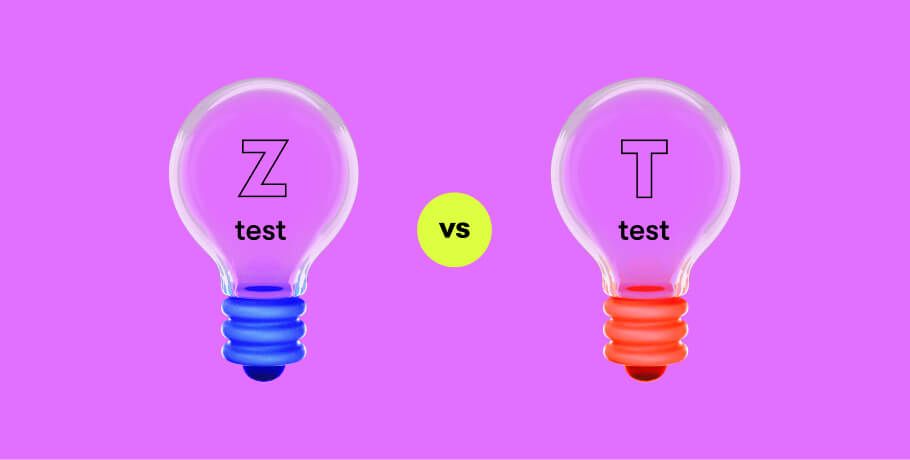Test automation is a key part of extreme programming and Agile software development. Automation means reaching faster and more accurate test results and higher performance, hence, it requires high-grade desktop and online testing tools. In this article, Alena, Senior Software Test Automation Engineer at EPAM, shares the list of top QA tools she uses in work.
Why are automation QA tools increasingly used?
Along with saving time for repetitive tests, it's an approach to improve the depth, scope, and accuracy of tests. Besides, there are cases where manual and automation testing tools can't be comparable. Namely, automated testing can simulate thousands of virtual users and their interaction with web applications.
Some QA tools still have their drawbacks, but surely, today's software testing automation is way more advanced compared to what developers used decades ago.
Back in these days, what are the top testing tools, and what key challenges do they help address?
Overview of the top automation testing tools
Let's go through the best web testing tools that include functional, integration, performance, load testing tools, and more.
Selenoid
Selenoid is one of the open-source testing tools. Based on Docker containers, it provides such features as support of multiple browser versions on one machine, full isolation of the browser environment, allowing to eliminate testing issues, and data storage in RAM to name a few. Besides, it takes little time and effort to install Selenoid. Here's a tutorial proving that:
<iframe width="100" height="396" src="https://www.youtube.com/embed/mxHqCMhpnaE" frameborder="0" allow="accelerometer; autoplay; clipboard-write; encrypted-media; gyroscope; picture-in-picture" allowfullscreen=""></iframe>Benefits:
- It's free
- Easy to maintain
- Isolated environment for each test
- Easy to parallelize, much more stable in comparison to Selenium Grid
- User interface with VNC letting you manually open developers tools while debugging in Selenoid
- Same environment for test debugging and CI
- Multiple browsers and browser versions support
- Video recording available
Some limitations include limited overall browser consumption, no automation for pulling browser images, and minor issues caused by misconfiguration.
ReportPortal
ReportPortal belongs to the open-source testing tools in software testing. It has a very good and flexible visualization of metrics and analytics. Also, ReportPortal accelerates routing result analysis using the collected history of execution and fail patterns to achieve hands-free analysis of the latest results.
Benefits:
- Managing all automation results and reports in one place
- Real-time automation
- Integration of testing frameworks or 3rd-party online testing tools via open REST API
- Failure prediction algorithm
- Compatibility with TestNG, jUnit, and other frameworks
If you want to use a ReportPortal EPAM instance for the storage of massive amount of data, you may face some issues with billing. However, if you have good infrastructure and DevOps teams, you can deploy this instance on your machine without any issues.
Spring TestContext
Spring TestContext Framework is an annotation-driven tool for integration and unit testing, that provides an impressive user base. Besides, using Spring TestContext enables you to integrate a number of Spring frameworks into the test automation framework that can be extremely useful for API testing, e.g. Spring Data JPA, Spring Rest Client.
Benefits:
- Supporting JUnit 4, JUnit Jupiter, and TestNG
- A big user base of Spring annotation and good support of it
- Dependency Injection
- Easier writing of tests with Spring-specific base classes
Using Spring framework requires more experienced engineers, which could be considered as a drawback. Also, without other Spring frameworks, Spring TestContext may be a redundant and too heavy approach for TAF due to some limitations where Spring TestContext is available. But in a combination with other Spring frameworks, using these tools could be a good decision.
Selenium WebDriver
Selenium WebDriver is a lightweight open-source framework used for testing web applications and represented by a collection of development and testing tools, each addressing different needs. This is a very popular toolkit with strong community support and in-depth expertise.
Benefits:
- It's easy to learn and implement
- Languages and framework support
- Open-source availability
- Multi-browser support
- Flexibility
Other tools may have better performance and native support opportunities, but Selenium is undoubtedly the tool that significantly simplifies test implementation, makes it faster, as well as provides in-depth expertise.
TestNG
TestNG is a testing framework that covers many categories of tests. Specifically, TestNG is more flexible and has out-of-box approaches for functional and integration testing.
Benefits:
- Wide range of annotations for all cases
- Easy to parallelize
- Easy to prioritize and group tests
- Support for data-driven testing
- Possibility to make dependant tests
- Strong community
TestNG is a stable, widely used tool tested over time. It has a lot of things out-of-box and has good support from other frameworks/tools.
Maven
Maven is a project management tool that's also frequently used for managing test framework projects.
Benefits:
- Defining and managing dependencies and resolving conflicts smoothly
- Uniform system for numerous tasks: compilation, distribution, dependency management
- Easier integration of other useful tools easier
Today Gradle Build Tool is getting increasingly popular as it builds projects faster and allows adding custom tasks easier. But Maven is still a good tool to use. If your developers mates use Maven, give it a try as well, and you won't be sorry.
Allure
Allure is a flexible lightweight test report tool. It provides detailed information on test failures and hence, allows to extract valuable information from the everyday execution of tests.
Benefits:
- Providing an on-premise solution
- Good representation of reports
- Multiple adapters for various testing frameworks
- Strong community and Git contributors
Yet, there are several limitations, and the most crucial is the history of runs.
GitLab CI
GitLab CI is a part of GitLab that allows to build and test the software whenever a developer pushes code to an application. This toolkit encourages developers and QAs to integrate their work often to eliminate or easily identify errors daily. While not many limitations were found under the hood of GitLab CI, it might look not so flexible for an automation team.
Benefits:
- Tests run distributed on separate machines, making further scalability smooth
- Simple configuration
- Faster results
- Source Control and CI in one place
- Hosted internally
BrowserMob Proxy
BrowserMob Proxy is one of the testing tools enabling QAs to gather performance data. In particular, this tool is used for managing browser behaviors and HTTP traffic. Also, BrowserMob Proxy has integration with Selenium.
Benefits:
- Capturing all requests through the proxy server
- Opportunity to verify the network requests and ensure an application goes across relevant values
- Validating the request and response time
- Opportunity to verify the response from a server
- Possibility to edit request/response, for instance when you need to add header or change host
So far, BrowserMob Proxy has not been actively updated resulting in some issues happening when using it in combination with Selenium and Maven.
Final thoughts on web testing tools
Automation testing keeps evolving, meaning we'll see smoother integrations, better solutions, and new tools covering even more areas of software development, and eliminating human participation in the testing process. We hope you enjoyed this overview!

As Chief Editor, Darya works with our top technical and career experts at EPAM Anywhere to share their insights with our global audience. With 12+ years in digital communications, she’s happy to help job seekers make the best of remote work opportunities and build a fulfilling career in tech.
As Chief Editor, Darya works with our top technical and career experts at EPAM Anywhere to share their insights with our global audience. With 12+ years in digital communications, she’s happy to help job seekers make the best of remote work opportunities and build a fulfilling career in tech.
Explore our Editorial Policy to learn more about our standards for content creation.
read more






















